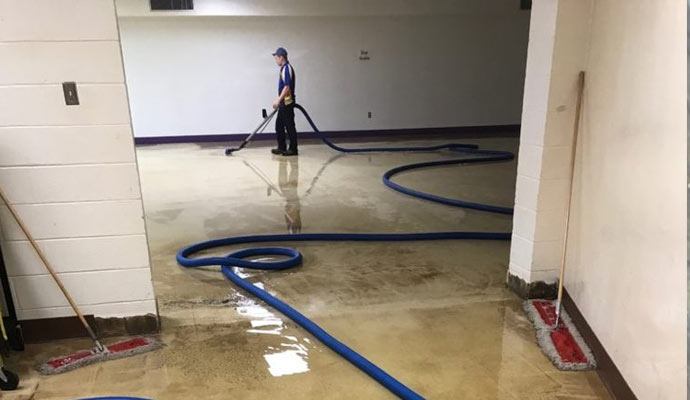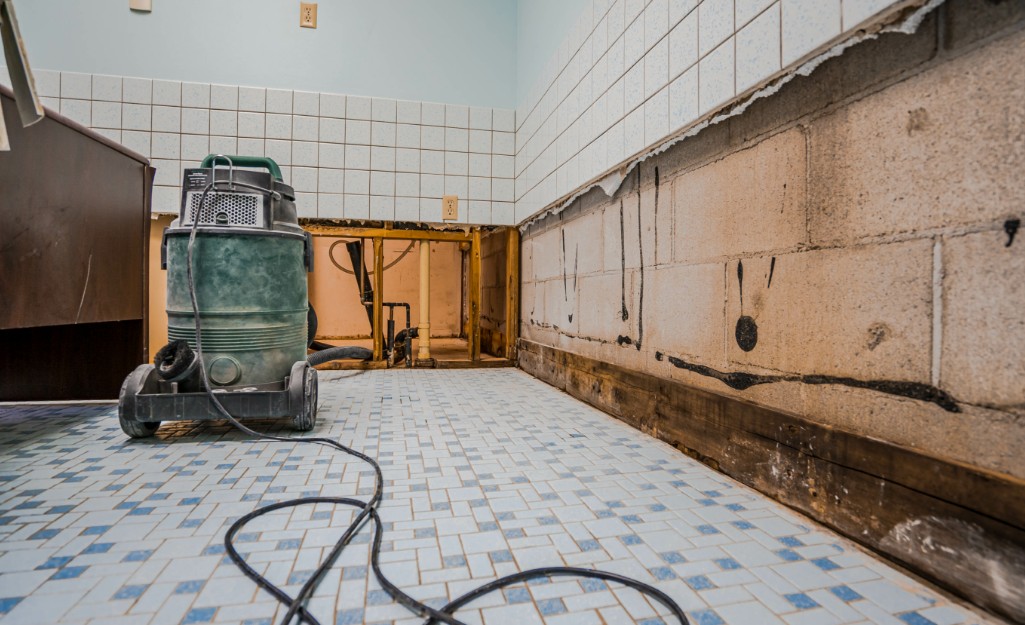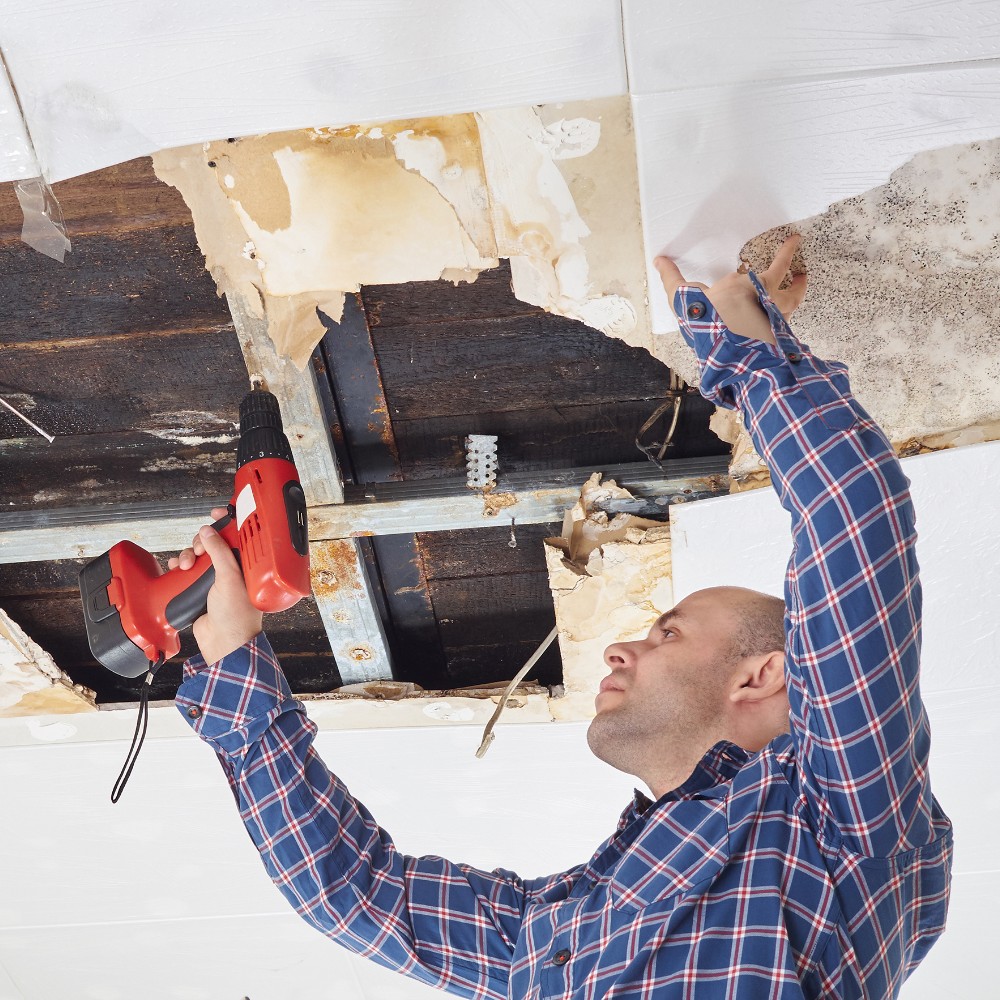How to prepare for Water Damage Restoration at home
Wiki Article
Water Damage Restoration 101: Understanding the Process and Expense
Water damage can strike unexpectedly, leaving property owners in a state of complication. Recognizing the reconstruction process is important for reliable recovery. From assessing the damage to selecting the appropriate provider, each step influences the general outcome and expense. Variables such as the kind of water damage and seriousness additionally play a considerable function. What are the certain strategies made use of in remediation, and how can one plan for possible expenditures?Kinds of Water Damage

First Assessment and Inspection

Water Extraction Techniques
Adhering to the preliminary analysis, efficient water extraction strategies are utilized to mitigate damage and protect against more issues. These techniques involve using customized equipment such as completely submersible pumps and industrial-grade vacuum cleaners - Mold Remediation After Water Damage. The selection of method depends on the quantity of water present and the kind of materials impacted. For standing water, submersible pumps are generally used for rapid removal, while vacuum cleaners are ideal for removing water from carpets and upholstery. Additionally, advanced approaches like water extraction mats may be utilized for hard-to-reach locations - Water Damage Restoration. The objective is to eliminate as much water as possible, decreasing the capacity for mold growth and structural damage. Prompt and efficient water extraction is vital in the overall water damage reconstruction procedureDrying Out and Dehumidification Process
Once the water removal is complete, the drying and dehumidification procedure becomes important to recovering the affected area. This phase normally utilizes industrial-grade dehumidifiers and air movers to efficiently lower moisture levels. The dehumidifiers draw in wet air, removing excess humidity, while air moving companies distribute air to speed up evaporation. Tracking devices is frequently utilized to track humidity and temperature levels, guaranteeing perfect drying problems. The period of this process can vary depending on the level of the water damage and environmental aspects. It is important to completely dry all impacted products, consisting of walls, floor covering, and home furnishings, to stop mold growth and structural damage. Correct execution of this step is crucial for a successful repair end result.Cleaning Up and Sterilizing Afflicted Areas
When the drying out process is total, a comprehensive preliminary analysis and inspection of influenced locations is vital to identify contamination degrees. Effective cleansing methods and ideal items have to after that be employed to get rid of debris and discolorations. Ultimately, sanitization and disinfection approaches are important to guarantee that dangerous microorganisms are eliminated, bring back the area to a risk-free conditionInitial Evaluation and Inspection
Before starting any type of restoration initiatives, a detailed preliminary assessment and evaluation of the impacted locations are essential for reliable cleaning and disinfecting. This process involves determining the level of water damage, identifying the source of the water breach, and assessing the materials influenced. Examiners typically look for indications of mold and mildew growth, structural stability concerns, and harmed personal belongings. The analysis also includes examining dampness levels utilizing customized devices to guarantee no covert water pockets stay, as these can result in further complications. Documenting the searchings for is crucial for intending the following action in the repair process. A detailed preliminary evaluation allows reconstruction experts to create a targeted technique for efficient cleansing and disinfecting, inevitably reducing damage and wellness threats.Cleaning Up Strategies and Products
Efficient cleansing and disinfecting of water-damaged locations need a variety of techniques and products customized to the certain products impacted. For permeable surface areas like drywall and carpets, extraction approaches are vital to remove excess wetness, complied with by deep cleansing with specialized detergents. Non-porous materials such as ceramic tile or steel can be cleaned making use of commercial-grade cleansers that properly get rid of impurities. Steam cleaning is another efficient technique, specifically for carpetings and furniture, as it uses high temperature levels to remove bacteria and mold and mildew (Flood Cleanup Services). Additionally, eco-friendly items are significantly preferred for their safety and effectiveness - Water Damage Restoration. Inevitably, choosing the suitable cleaning techniques and items not only assures prompt sanitation however additionally help in avoiding more damage and health and wellness dangers connected with water intrusionSanitization and Disinfection Techniques
When attending to water damage, correct sanitization and sanitation methods are important to guarantee the security and wellness of the afflicted atmosphere. After initial cleansing, surface areas must be treated with proper disinfectants to eliminate pathogens, mold, and germs that thrive in wet conditions. Common methods consist of using EPA-approved chemical anti-bacterials, which can be used with splashing or cleaning methods. In addition, ultraviolet (UV) light systems can effectively sanitize areas by reducing the effects of microorganisms without severe chemicals. The selection of approach often depends on the sort of materials influenced and the level of contamination. Ultimately, detailed sanitization Water Damage Restoration not just recovers a secure space but likewise aids stop future health and wellness risks connected with sticking around dampness and mold and mildew development.
Repair Work and Restoration Options
Assessing the damage triggered by water direct exposure is essential for establishing the proper fixings and repair options. Home owners might encounter various concerns, consisting of harmed drywall, warped floor covering, and compromised structural components. Depending on the level of the damage, repair services may include changing areas of drywall, mounting brand-new floor covering, or reinforcing structural beams. In instances of extreme damage, full replacement of damaged products could be necessary. Furthermore, expert restorers commonly advise making use of dampness meters to examine hidden wetness levels prior to picking the most effective strategy. It is crucial to act promptly to avoid mold and mildew growth and further damage. Selecting the ideal options not just restores the home but additionally ensures long-lasting security and capability.Aspects Influencing Restoration Prices

The extent of water damage directly impacts the restoration costs homeowners can anticipate to sustain. Elements such as the resource of the water, the period of direct exposure, and the afflicted products considerably influence prices. Tidy water damage from a broken pipeline is normally less costly to recover contrasted to damage caused by sewer. Additionally, the degree of contamination determines the demand for specialized cleansing and disposal services, additionally boosting costs. Geographical area likewise plays a role, as local labor prices and accessibility of repair services can vary. Ultimately, the urgency of the feedback influences expenses; quicker interventions generally bring about lower overall costs by avoiding further damage. Comprehending these variables is vital for home owners when estimating restoration costs.
The three key kinds of water damage are classified based on contamination degrees: clean water, gray water, and black water. A complete initial assessment and inspection are crucial actions in the water damage remediation process. For standing water, completely submersible pumps are commonly utilized for quick elimination, while vacuum cleaners are ideal for extracting water from carpets and furniture. The degree of water damage directly impacts the restoration costs house owners can anticipate to incur. Tidy water damage from a damaged pipeline is usually much less costly to recover contrasted to damage created by sewage.
Report this wiki page